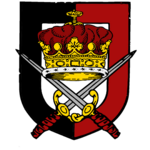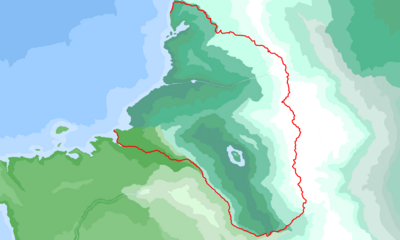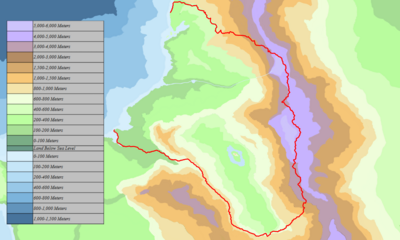Khijovia: Difference between revisions
No edit summary |
No edit summary |
||
| Line 122: | Line 122: | ||
During ancient times, Khijovia served as a crossroads for numerous neolithic cultures. Thriving city-states emerged during the [https://iiwiki.us/wiki/Sparkalia#Era_of_Ruin_-_985_BR_to_0_BR Era of Ruin], preserving their cultural identity and language staunchly against external influences. Notwithstanding the upheavals in the rest of Sparkalia, Khijovia remained isolated, relatively unaffected by wars and famines until the catastrophic [[Abheric Wars]] and the subsequent collapse of the city-state system around 277 BR, ushering in the [[Barren Age]] and marking the end of the [[Archaic Age]] in Khijovian history. Despite suffering continental amnesia during the [https://iiwiki.us/wiki/Sparkalia#The_Great_Restart Great Shuffle], Khijovian culture persisted. | During ancient times, Khijovia served as a crossroads for numerous neolithic cultures. Thriving city-states emerged during the [https://iiwiki.us/wiki/Sparkalia#Era_of_Ruin_-_985_BR_to_0_BR Era of Ruin], preserving their cultural identity and language staunchly against external influences. Notwithstanding the upheavals in the rest of Sparkalia, Khijovia remained isolated, relatively unaffected by wars and famines until the catastrophic [[Abheric Wars]] and the subsequent collapse of the city-state system around 277 BR, ushering in the [[Barren Age]] and marking the end of the [[Archaic Age]] in Khijovian history. Despite suffering continental amnesia during the [https://iiwiki.us/wiki/Sparkalia#The_Great_Restart Great Shuffle], Khijovian culture persisted. | ||
In 289 AR, the [[Kveutonian Empire|Kveutonian]] civilization conquered and divided Khijovia into governatorates, making it a crucial economic and cultural hub within the [[Kveutonian Empire]]. The empire reached its zenith around 415 but dissolved in 502, leading to the formation of independent statelets and religious-monastic military orders, including the influential [[Jovianic Order]]. Over the centuries, cities transformed into feudal lordships, giving rise to Khijovian principalities, duchies, counties, and marquisates. The Grand Duke of Klettoria, [[Zenon the Great]], initiated a national unification campaign in 1152, defeating the rival [[House of Arenia]] and establishing the [[Kingdom of Khijovia]] on July 11, 1161. Despite centuries of rule, the [[Zenonian Dynasty]] faced a coup on January 28, 1534, leading to the formation of the [[Khijovian Federation]]. | In 289 AR, the [[Kveutonian Empire|Kveutonian]] civilization conquered and divided Khijovia into governatorates, making it a crucial economic and cultural hub within the [[Kveutonian Empire]]. The empire reached its zenith around 415 but dissolved in 502, leading to the formation of independent statelets and religious-monastic military orders, including the influential [[Jovianic Order]]. Over the centuries, cities transformed into feudal lordships, giving rise to Khijovian principalities, duchies, counties, and marquisates. The Grand Duke of [[Klettoria]], [[Zenon the Great]], initiated a national unification campaign in 1152, defeating the rival [[House of Arenia]] and establishing the [[Kingdom of Khijovia]] on July 11, 1161. Despite centuries of rule, the [[Zenonian Dynasty]] faced a coup on January 28, 1534, leading to the formation of the relatively short-lived [[Khijovian Federation]]. In May 1607, [[Arcadion II|Prince Arcadion]] of the [[House of Zenon]] reclaimed power and officially founded the Ascended Kingdom of Khijovia on June 3, 1607. | ||
__TOC__ {{TOC right}} | __TOC__ {{TOC right}} | ||
Revision as of 12:58, 18 July 2024
This article is incomplete because it is pending further input from participants, or it is a work-in-progress by one author. Please comment on this article's talk page to share your input, comments and questions. Note: To contribute to this article, you may need to seek help from the author(s) of this page. |
Ascended Kingdom of Khijovia Khıjovïannĕ Krønïæ Mœþra | |
|---|---|
| Motto: "Œþ ëna Ðracōnïæ nīəva Aþtonо̆ë voyra" "Love of the Motherland is our only Law" | |
| Anthem: Khıjovïannĕ Ară Ghanþо̆ra The Glorious Khijovian Anthem | |
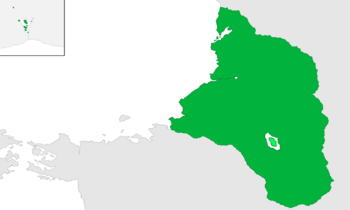 Lands and surroundings of the Ascended Kingdom of Khijovia, 1613 AR | |
| Capital | Kleitore |
| Largest | Xoviah |
| Official languages | Khijovian |
| Recognised regional languages | Teutorian, Aldorian, Koritian |
| Ethnic groups | Humans (82.9%) Sheepfolk (8.6%) Goatfolk (6.4%) Kyleth (2.1%) |
| Religion | Aravianism (94.2%) Other (3.5%) Atheism (2.3%) |
| Demonym(s) | Khijovian, Khijovic |
| Government | Feudalistic Constitutional Monarchy |
• Ascended King of Khijovia | Arcadion II |
• Ascended Queen of Khijovia | Carevia I |
| Legislature | Royal Parliament |
| Establishment | |
• Foundation of the Ascended Kingdom | June 3, 1607 AR |
| Area | |
• Land Area | 1,386,546 km2 (535,348 sq mi) |
• Water (%) | 6.3 |
| Population | |
• 1613 AR estimate | 127,085,900 |
• Density | 86.6/km2 (224.3/sq mi) |
| GDP (nominal) | estimate |
• Total | $ 225,000,000,000.00 |
• Per capita | $ 1,772.00 |
| Currency | Shonenor (SHN) |
| Date format | dd/mm/yy |
| Driving side | right |
Khijovia (Khijovian: Khıjovïæ [kɪjəʊviə]), officially the Ascended Kingdom of Khijovia, is a feudalistic constitutional monarchy situated in northwestern Pelia, with Kleitore serving as its capital. It shares its borders with the Federated People's Republic of Kyldigard to the north and the Kingdom of Prestore to the south, while the Kesper Sea lies to the west. It occupies the northern portion of the High West region and possesses several overseas colonies, including the Recondian archipelago in the Wintry Ocean, Thenoria in northern Ilus, and Yvrethia in northeastern Pelia, which is the largest and most significant of these territories. Mainland Khijovia has an estimated population of approximately 110 million, making it the most populous country in Pelia. The colonial territories contribute an additional 17 million inhabitants, bringing the total population of Khijovia to 127 million. Known for its deeply spiritual society, the nation has maintained a unique connection with the magical arts throughout its history, with approximately 94% of the population belonging to the Aravian faith.
During ancient times, Khijovia served as a crossroads for numerous neolithic cultures. Thriving city-states emerged during the Era of Ruin, preserving their cultural identity and language staunchly against external influences. Notwithstanding the upheavals in the rest of Sparkalia, Khijovia remained isolated, relatively unaffected by wars and famines until the catastrophic Abheric Wars and the subsequent collapse of the city-state system around 277 BR, ushering in the Barren Age and marking the end of the Archaic Age in Khijovian history. Despite suffering continental amnesia during the Great Shuffle, Khijovian culture persisted. In 289 AR, the Kveutonian civilization conquered and divided Khijovia into governatorates, making it a crucial economic and cultural hub within the Kveutonian Empire. The empire reached its zenith around 415 but dissolved in 502, leading to the formation of independent statelets and religious-monastic military orders, including the influential Jovianic Order. Over the centuries, cities transformed into feudal lordships, giving rise to Khijovian principalities, duchies, counties, and marquisates. The Grand Duke of Klettoria, Zenon the Great, initiated a national unification campaign in 1152, defeating the rival House of Arenia and establishing the Kingdom of Khijovia on July 11, 1161. Despite centuries of rule, the Zenonian Dynasty faced a coup on January 28, 1534, leading to the formation of the relatively short-lived Khijovian Federation. In May 1607, Prince Arcadion of the House of Zenon reclaimed power and officially founded the Ascended Kingdom of Khijovia on June 3, 1607.
Etymology
The origin of the name Khijovia has long intrigued linguists and historians, prompting diverse reconstructions. While some theories delve into etymological roots, others are steeped in historical narratives, including the intriguing notion of an ancient pre-Shuffle king named Khjvonnə in popular traditions.
One prevalent theory suggests that the name stems from Khyjvīə, an exoethnonym used by the Koritians for a tribe residing in the neighboring Aldoria region. Another hypothesis, not mutually exclusive, proposes that these people venerated a pagan deity, Khœvă, making the name signify "inhabitants of the land of Khœvă."
Alternatively, a distinct theory posits a simpler origin—the semantic fusion of Khvıəyūtœnnə, an adjective linked to the Kveutonian Empire, and Jyovïæhnnə, associated with the Jovianic Order and its doctrine.
History
Primordial Aeon
Prehistory
Approximately 35,000 years ago, the first known inhabitants of the Khijovian territory were the Acreatics, a nomadic civilization whose existence is primarily evidenced by the archaeological site of Yvernia along today's Pletorian coasts. Yvernia preserves remnants of an intricate funerary complex, featuring over 20 tombs with associated burial items. The Acreatics had distinctive burial practices, arranging skeletons with heads facing East—a potential symbol of rebirth. Skulls were adorned with red ocher, signifying a return of blood and life to the deceased. The complex walls displayed propitiatory rock paintings, depicting shamanic rituals.
Burial for the Acreatics was a magical rite, aimed at preventing the disturbance of the deceased's soul and facilitating its transition to new life. This culture marked the initial encounters with magical arts in the Khijovian region. The prevalence of Venus figurines in the tombs hints at a matriarchal social organization, emphasizing women's connection to fertility and reproduction.
Despite the Neolithic agricultural revolution, the Acreatics maintained their reliance on hunting and shellfish gathering. Around the twelfth millennium BR, climatic shifts prompted their migration from coasts to surrounding regions. The mountainous terrain led to the development of transhumant farming, eventually giving way to settled agriculture. This marked the end of nomadism and the permanent settlement of the Acreatic people across the Khijovian region.
Protohistory
The advent of agriculture and livestock, providing a surplus of food, led to a significant demographic increase and the emergence of the first housing agglomerations. During this phase, the matriarchy gradually faded as the need for male military leaders arose to defend villages, ushering in a transition to a patriarchal society. The onset of metallurgy in Khijovia marked the Copper Age, giving rise to distinct cultures: the Venatorian culture in the north, Khantan culture in the east, and Koritian culture in the central-south. The Bronze Age saw the emergence of the Xomian culture on Axiomia island, while the Iron Age gave rise to the Kleitite culture near the mouth of the Thevre river. These cultures, stemming from the Acreatic people, shared a common language but spoke different dialects, often unintelligible to one another.
Around 1400 BR, the large village centers evolved into cities, establishing an interdependent relationship with the surrounding countryside. Rural areas produced goods to sustain urban centers, while the cities provided defense for villages. Job specialization's development led to a social hierarchy, with the ruling class of specialists forming the foundation for the future aristocratic caste.
Era of Ruin
Archaic Age
Urban centers within the Khijovian region manifested as independent and self-sustaining city-states, flourishing predominantly throughout the Era of Ruin due to a robust isolationist policy. Despite their cultural and linguistic similarities, these city-states adopted diverse organizational structures.
In certain locales, authority was wielded in the name of the deity by theocrats—priests perceived as those chosen by the gods to govern the city. In such cases, there existed no separation between political and religious power. The theocrat, serving as the executor of divine will, held full political authority, led the military, and administered justice. The sovereign received support from a caste of priest-officials known as hierarchs, convening every ten years to elect a new state theocrat and distribute cultivated lands among the populace. The temple of the eponymous divinity, aside from serving as the theocrat's seat, functioned as an organizational hub for work, a storage facility for foodstuffs, and the city's treasury. In these cities, private property was virtually nonexistent, as land was communal, and all residents contributed to public works. Conversely, in some instances, this theocratic system devolved into viewing the theocrat not merely as the gods' representative but as a deity incarnate, whose sacralization justified their authority. The unbridled powers of the absolute theocrat found legitimacy in a powerful priestly caste of extensive landowners, exerting considerable influence in political affairs. The high priest within this caste assumed the role of grand vizier to the sovereign. Consequently, from a political standpoint, Khijovian absolute theocracy manifested as an autocratic form of governance fundamentally grounded in priestly legitimacy.
On the other hand, certain cities evolved into monarchies, representing a likely progression from the theocratic system, wherein a clear distinction was established between political and religious authority. Concurrent with this separation of sovereign power, the kings in these city-states fortified their capacity to intervene in social and economic affairs, channeling their efforts in a more centralized manner. In certain instances, this consolidation of royal power also involved the adoption of an expansionist policy aimed at territorial enlargement. These kingdoms adhered to a well-defined ideology of monarchical authority, a concept subsequently transmitted to subsequent state organizations in Khijovia. Similar to theocratic systems, it was believed that the gods endowed the sovereign with power; however, this divine gift, while acknowledged, was deemed distinct from religious authority. Consequently, this shift led to the displacement of the temple, formerly the governing center, with the royal palace assuming the pivotal role of power. In this organizational framework, citizens were regarded as mere subjects and possessions of the sovereign, although it is noteworthy that substantial privileges were reserved for the priestly class.
Certain city-states adopted a state structure founded on a timocratic principle, wherein landed or military aristocrats governed within a small general assembly known as the kledia (klaēdïæ). Exclusive to a particular caste, assembly members had the privilege of inheriting a seat of power. The kledia biennially elected seven specialized magistrates responsible for administrative, religious, and military functions. Upon concluding their terms, these magistrates joined the council of sapients - the ghrontia (ghrœhntïæ) - serving as both a supervisory body and the supreme court. In addition to these aristocratic institutions, there existed the drarchia (đrahrchïæ), a minor consultative assembly representing some members of the less affluent population. In cities governed by aristocracy, the title of citizen, implying possession of political rights, was reserved for adult males who owned land. Among these citizens, only the large landowners held actual political power, qualifying them for high offices within the city. In an economy centered around agriculture and livestock, wealth was conspicuously measured by the extent of landownership. The considerable influence of the aristocracy severely constrained opportunities for small landowners and marginalized all other individuals within the city, subjecting them to aristocratic domination.
Finally, when a city-state was governed by its populace, it earned the designation of a "democratic" city. Democracy, emerging later in the League Phase, evolved as a protracted process originating from the aristocratic system. Democratic transformations commenced with concessions from the aristocracy, aimed at averting popular revolts, which strengthened the people's influence within institutions. Over time, following a sequence of concessions, the drarchia, where the people asserted numerical superiority, ascended to become the paramount political entity, leading to the displacement of the kledia and ghrontia. Magistracies were drawn from all citizens except women, individuals from other cities, serfs, and slaves, while military and financial positions remained elective. Citizens of democracies enjoyed equal rights to speak in the people's assembly and tribunal, alongside equal legal rights. Aristocrats, on the other hand, were largely excluded and marginalized, stripped of their extensive estates, barred from participating in political life, and, in certain instances, faced proscription lists calling for exile or possible elimination. These radical measures, indicative of demagogic populism adopted by the "democrats," led to some democracies being labeled kakistocracies by other city-states. Ultimately, Khijovian democracy never materialized in its pure form, existing as a hybrid balance resulting from the coexistence of different state forms.
This forced coexistence of diverse and conflicting state systems endured throughout the entirety of the Archaic Age in Khijovian history. While diplomatic relations between city-states remained ostensibly peaceful, underlying political tensions lingered, compelling cities to reconcile through an intricate network of alliance pacts and leagues. This network served as the sole remedy to prevent disastrous intranational wars.
League Phase
Abheric Wars
Barren Age
Khijovic Middle Ages
Syhric Advent
Nova Antiquity
Kveutonian Age
Jovianic Domination
Modern Era
Surgence Epoch
Zenonian Age
Khijovian Renascence
Koronian Civil War
Contemporary Age
Federalist Parenthesis
Ascension Period
Geography
Physical Geography
Situated within the expansive geographical region known as the High West, the Khijovian landscape showcases diverse features, making it one of the most varied regions on the Pelian continent. Bordered by the Kyldigardian region to the north, Khijovia is geographically enclosed by the Clastoclite range to the east and the Stornic massif to the south. The Khijovian terrain exhibits a broad spectrum of characteristics, with a prevalence of hilly areas compared to flat or mountainous zones, maintaining an average altitude of approximately 730 meters above sea level. The mountainous landscapes extend across the eastern expanse of the nation, encompassing a significant portion of the western Clastoclite system. The highest peaks in Khijovia are situated in the central Clastoclites, where numerous summits exceed 5000 meters, including the remarkable Mount Eletherium (5800 meters), standing as the loftiest peak in the Clastoclite range. Over time, the Khijovian mountainous region has been shaped by an ancient Cenozoic glacial mass, leaving behind extensive moraines flanking the western Clastoclite slope, forming expansive highlands in the north and numerous shallow valleys amidst the southern hills.
The plains of Khijovia encompass various areas, including the Catridian plain, formed by the alluvial expanses of the Thevre river and its tributaries, extending to Pyrisia; the Betronic plains, elevated plains along the coasts of Androvia and Charonthia; and the Platic plain, an elongated flat valley of tectonic origin encircling the Axiomia Lake, stretching from Cassiopia to Carcassonia.
Numerous Khijovian isles are grouped in small archipelagos, such as Cheronia off the Charonthic coasts, and Recondia, a polar archipelago situated within a deep lagoon connected to the Wintry Ocean, entirely surrounded by ice cap glaciers.
Geology
Khijovia's geological history is defined by the Late Cenozoic collision between the Kesperian and northern Pelian plates, resulting in the Clastoclitic chain and the accretion of microplates. This area is highly active geologically, with notable Neogene volcanism and seismicity. Studies have identified two main paleogeographic domains separated by the Clastoclitic line: the Pelian domain and the Kesperian domain, which includes the High West and the Kesperian marine basin. The Khijovian subregion features sedimentary rocks dating from the Precambrian to the Quaternary and Cambrian metamorphites in the southeast. Khijovia's diverse geological features contribute significantly to the understanding of north-western Pelia's geology.
Hydrography
Climate
Meteorology
Wildlife
Politics
State Structure
Administrative Regions
| Region | Map of the Khijovian Administrative Regions | |
|---|---|---|
| 1 | Klettoria | 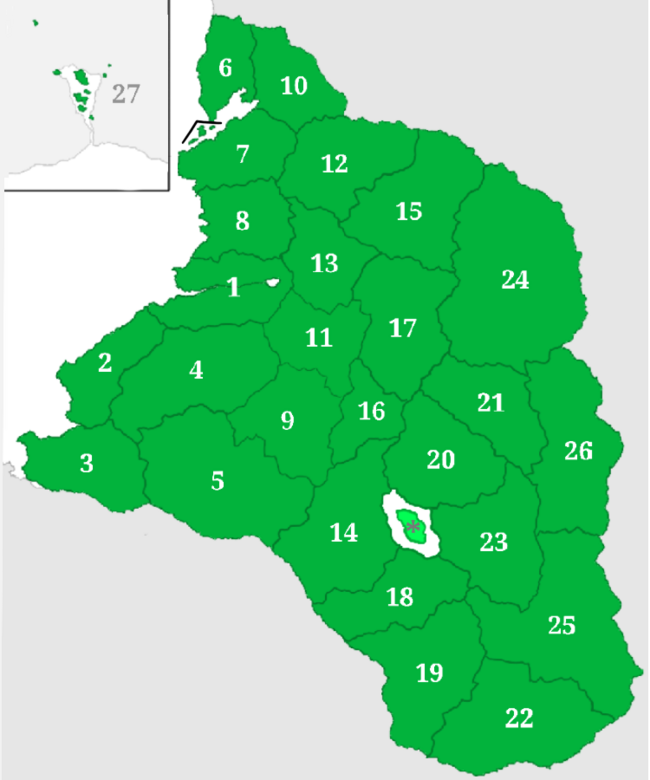
|
| 2 | Luriah | |
| 3 | Pyrisia | |
| 4 | Qaylasiah | |
| 5 | Atredia | |
| 6 | Chondia | |
| 7 | Charonthia | |
| 8 | Androvia | |
| 9 | Ketheria | |
| 10 | Iverniah | |
| 11 | Kharpovia | |
| 12 | Venatoria | |
| 13 | Profania | |
| 14 | Koritia | |
| 15 | Bellatoria | |
| 16 | Cassiopia | |
| 17 | Corkovia | |
| 18 | Aldoria | |
| 19 | Teutoria | |
| 20 | Garganthia | |
| 21 | Kalkhovia | |
| 22 | Carcassonia | |
| 23 | Sopholenia | |
| 24 | Karkarovia | |
| 25 | Kenveciah | |
| 26 | Akrocanthia | |
| 27 | Recondia | |
| * | Axiomia | |

